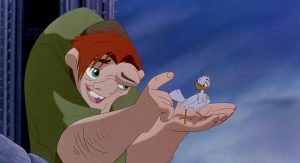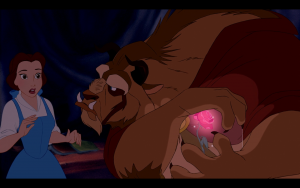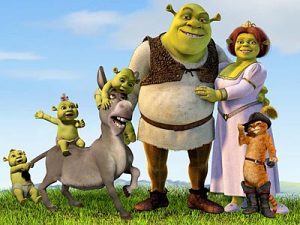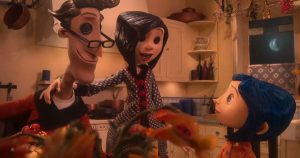
On March 18th, 2017, LMU’s Animation Club hosted their Showrunner Panel, which turned out to be a great success! Our Animated Perspectives Professor, Sapphire Sandalo, moderated the discussion between Brandon Vietti (showrunner from Young Justice), Chris Savino (showrunner from The Loud House), and Mike Mayfield (animation director and executive producer from Mr. Pickles).
The panelists were asked a variety of questions, ranging from their how they became animation showrunners (or executive producers), how they balance the different aspects of their work, and advice for students aspiring to be showrunners. Here are some of the answers we recieved from our panelists.
- Becoming a showrunner is more than just creating a show. As a matter of fact, Animation showrunners tend to have “many different hats,” or in other words, they manage multiple departments of production all at once. In one meeting, they may be talking with storyboard artists about various panels drawn; in the next meeting, they maybe talking to the post production team about an episode soon to air. Showrunners tend to have their days packed with different meetings with the various departments regarding their show. Sometimes, they do get to work on some animation for the episodes, but most times they are too busy with the other meetings. Executive producers have a very similar day.
- Collaboration between showrunners, producers, directors and writers is key! Everyone wants to tell the story, and working together is the best way to get it done. Sometimes, however, when an issue with story comes up, someone will have to have the final say on what content goes in the episode and what doesn’t. Whether it is the showrunner, writer, producer, or director, it all depends on the show. Different shows will have a different way of managing content and leadership style.
- What do showrunners and executive producers miss the most? Animating and Storyboarding. As showrunners and executive producers, a lot of their time is taken up by meetings and resolving issues in the production. This sometimes keeps them away from doing the things that brought them into the Animation Industry in the first place. That is why it is important to have your own passion projects, so you can continue doing what you want to do while still loving your career.
- Advice for aspiring showrunners: Pitch your story to others, make sure you have strong characters and a good storyline. Stay true to yourself and your story. And finally, don’t be desperate. Talk with confidence, and make sure you give off the impression that your story will get made no matter what happens during the pitch.
These were just some of the points made during the Showrunner Panel. All the panelists gave precious advice and knowledge to all who attended, and we had plenty of fun! As part of the Animation Eboard, I hope everyone comes to our upcoming panels in 2017 and 2018, as we will have more awesome panelists and more fun!






